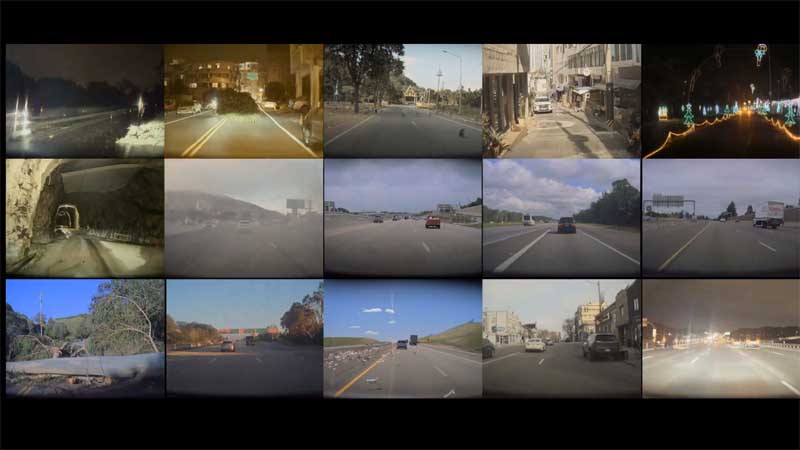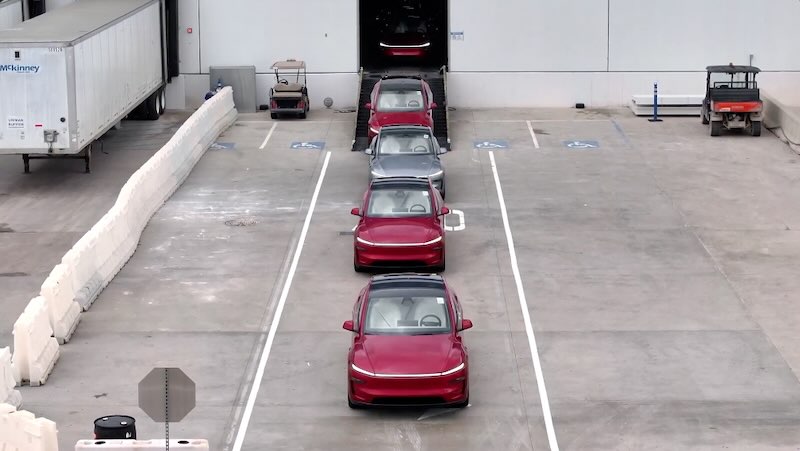Tesla continues to chart its own course in autonomous vehicle development with its unwavering commitment to pure vision systems, challenging industry assumptions about sensor fusion requirements. During a recent earnings call, Tesla’s leadership defended this approach, revealing technical details about how the company addresses environmental challenges that typically plague camera-based systems.
At the heart of Tesla’s vision-only strategy lies a seemingly simple but technologically complex approach: bypassing the Image Signal Processor (ISP). Technique allows Tesla vehicles to work directly with raw photon data rather than processed images optimized for human viewing.
When traditional cameras face challenging lighting conditions, they often lose critical information during image processing. The ISP — designed to create visually pleasing images for humans — applies multiple transformations that can actually degrade machine perception capabilities.
“We use a technology called direct photon counting,” Tesla explained during the earnings call. “When a camera captures light, it usually processes the data through an ISP to produce the images we see. If pointed directly at the sun, the processed image often turns completely white.”

Tesla AI Research Scientist, Foundation Models, Autopilot AI
By accessing raw Bayer format data instead, Tesla’s neural networks receive substantially more information. A camera like Tesla’s IMX490 outputs 12-bit raw data with 4,096 brightness levels per pixel, compared to just 256 levels in a standard 8-bit RGB image after ISP processing. Difference proves crucial when vehicles transition between extreme lighting environments like tunnels, night driving, or direct sunlight.
Why vision-only matters
Tesla’s insistence on pure vision represents more than technological stubbornness — it forms a core part of the company’s autonomous driving philosophy. While competitors integrate LiDAR, radar, and other sensors into complex fusion systems, (Baidu IDG Chief R&D Architect Wang Liang on Tesla FSD V12 and LiDAR vs Vision), Tesla argues such approaches introduce unnecessary complexity and potential failure points.
The vision-only approach also offers practical advantages. Cameras are significantly less expensive than LiDAR systems, allowing Tesla to deploy hardware across its entire fleet at manageable costs. Additionally, cameras capture texture, color, and contextual information that point-cloud systems like LiDAR cannot detect, such as text on road signs or traffic light colors.
Industry shift toward AI-based perception
Tesla isn’t alone in recognizing the importance of advanced visual perception. Autonomous driving industry has gradually shifted focus from sensor hardware to artificial intelligence and neural networks. Companies throughout the sector have increased hiring for AI specialists rather than sensing hardware engineers, suggesting a broader recognition that software intelligence might ultimately prove more valuable than additional sensors.
Tesla Deploys “FSD Unsupervised” in Giga Texas: 50,000+ Driverless Miles Logged:
This trend indicates a potential convergence toward Tesla’s philosophy: that sufficiently advanced AI can extract more information from visual data than previously thought possible. However, some industry analysts maintain that redundant sensing modalities provide critical safety margins that pure vision systems may lack.
Despite Tesla’s confidence in its vision-only strategy, practical limitations remain. Tesla FSD V13 still struggle with certain lighting conditions. For instance, FSD v13.2.2 continues to trigger takeover requests when facing strong backlighting — an indication that the system hasn’t completely solved all perception challenges.
These ongoing issues raise questions about whether pure vision can truly match or exceed the capabilities of sensor fusion approaches in all driving scenarios. Critics argue that while Tesla’s strategy may work in most conditions, edge cases could prove problematic without redundant sensing modalities.
The debate between pure vision and sensor fusion extends beyond technical specifications. It represents fundamentally different approaches to scaling autonomous vehicle technology. Tesla’s vision-only strategy enables faster deployment across millions of vehicles at reasonable costs, while sensor fusion approaches offer potentially higher reliability at the expense of increased complexity and cost.
As autonomous driving technology matures, the market will ultimately determine which approach prevails. If Tesla successfully demonstrates that pure vision can handle the full spectrum of driving scenarios, it could establish a new industry paradigm. If not, the company may eventually need to reconsider its stance on supplementary sensors.
For now, Tesla continues refining its raw vision capabilities, counting on neural networks to extract maximum information from photons rather than processed pixels. Whether this vision proves clear enough remains to be seen.
Related Post
Tesla Deploys “FSD Unsupervised” in Giga Texas: 50,000+ Driverless Miles Logged
Cybertruck with HW4 Aces FSD Wall Test Where Model Y Failed: Recreate Mark Rober Test
Vision-Language-Action Models: Revolutionizing Autonomous Driving Technology in 2025
